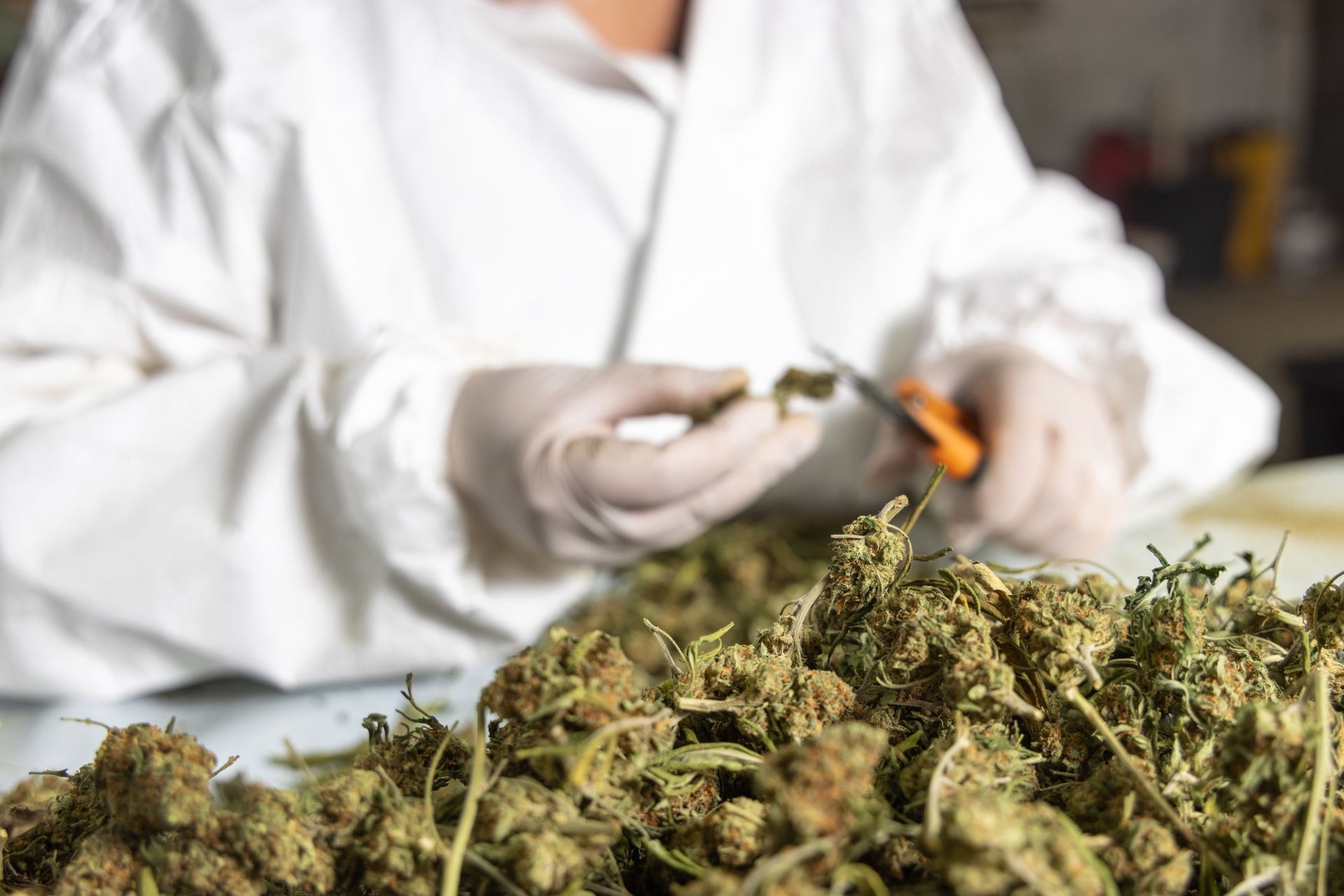What to Do After a Loss at Your Cannabis Business
See How We're Different
or call us: (215) 653-8411
Operating a cannabis business in the United States today is a challenging endeavor. Despite the growing legalization and market interest, profitability remains elusive for many entrepreneurs. In fact, only 27% of U.S. cannabis businesses are profitable as of 2024, according to Whitney Economics. If you’ve recently experienced a loss, whether financial or operational, it’s essential to understand why these setbacks occur and how to respond effectively to safeguard your future in this volatile industry.
Understanding the Landscape: Why Losses Are Common
The cannabis industry is unlike many others due to its unique regulatory, financial, and market challenges. One critical factor is the high failure rate—studies show that 42% of cannabis businesses fail within the first three years, which is more than double the failure rate for businesses in other sectors. This statistic highlights the inherent risks involved in cannabis entrepreneurship.
Part of the struggle stems from an oversaturated market, particularly in states like California. The state currently has more inactive and surrendered cannabis licenses (10,828) than active ones (8,514), signaling a significant contraction in the number of operational businesses. This oversupply, combined with intense competition, squeezes profit margins and increases the likelihood of losses. Many entrepreneurs enter the market with high hopes, but the reality of competing against established brands and a flood of new entrants can quickly lead to disillusionment.
Moreover, the regulatory environment remains a major hurdle. According to industry experts, stores are closing not simply because of slow sales but because the regulatory framework is unsustainable. Jonatan Cvetko, executive director of the United Cannabis Business Association, notes that the industry has reached a tipping point where failures outnumber successes, partly due to these pressures. The complex web of local, state, and federal regulations can create confusion and lead to costly compliance issues. For instance, businesses often face unexpected fees, stringent licensing requirements, and frequent changes in laws that can disrupt operations and financial planning.
In addition to regulatory challenges, the financial landscape for cannabis businesses is fraught with obstacles. Access to traditional banking services remains limited, forcing many companies to operate on a cash-only basis. This not only complicates transactions but also heightens security risks and makes it difficult to manage finances effectively. Furthermore, the lack of access to capital can stifle growth and innovation, as entrepreneurs struggle to secure funding for expansion or new product development. As a result, many businesses find themselves in a precarious position, unable to adapt to market demands or invest in necessary improvements.
Consumer preferences in the cannabis market are also evolving rapidly, adding another layer of complexity for businesses trying to stay afloat. As more states legalize cannabis, consumers are becoming increasingly discerning, seeking out high-quality products and unique experiences. Companies that fail to keep pace with these changing preferences may find themselves losing market share to more agile competitors. This dynamic environment requires constant adaptation and a keen understanding of market trends, which can be particularly challenging for newer entrants who may lack the resources or experience to pivot effectively.
Step 1: Conduct a Thorough Post-Loss Analysis
After experiencing a loss, the first and most critical step is to analyze what went wrong. This involves a detailed review of your financials, operations, and market positioning. Look beyond surface-level symptoms and try to identify systemic issues. Was the loss due to poor cash flow management, excessive overhead, regulatory fines, or declining sales?
Given the complexity of cannabis regulations, it’s important to assess compliance costs and operational inefficiencies. Many businesses underestimate how regulatory burdens impact profitability. Beau Whitney, founder of Whitney Economics, emphasizes that “operators cannot make money, regardless of how much money they actually generate,” highlighting that revenue alone does not guarantee success if costs and compliance are unmanageable.
Use this analysis to create a clear picture of your business’s financial health. Tools like cash flow statements, profit and loss reports, and break-even analyses are invaluable. This clarity will inform your next steps and help avoid repeating costly mistakes.
Additionally, consider conducting a SWOT analysis (Strengths, Weaknesses, Opportunities, Threats) to gain a comprehensive understanding of your business environment. This method not only highlights internal factors but also external market conditions that could have contributed to the loss. For instance, shifts in consumer preferences or increased competition can significantly impact your bottom line. By identifying these factors, you can pivot your strategy to better align with market demands and capitalize on emerging opportunities.
Furthermore, engaging with your team during this analysis can provide diverse perspectives that may uncover overlooked issues. Employees on the front lines often have insights into operational inefficiencies or customer feedback that can be invaluable. By fostering an open dialogue, you can create a culture of continuous improvement, where everyone feels empowered to contribute to the recovery process. This collaborative approach not only strengthens team dynamics but also enhances your ability to adapt and thrive in a challenging business landscape.
Step 2: Reevaluate Your Business Model and Market Position
Once you understand the causes of your loss, it’s time to reconsider your business model. The cannabis market is evolving rapidly, and flexibility is key. Oversaturation is a significant problem, especially in states issuing new licenses without adequately assessing supply and demand. This has led to fierce competition and shrinking market share for many operators.
Ask yourself if your product offerings, pricing strategy, and target customer base align with current market realities. Are you competing on price alone in an overcrowded market? Are there niche segments or value-added services you could pursue to differentiate your brand?
Some businesses have found success by focusing on quality, branding, or ancillary services like delivery and education. Others pivot to wholesale or cultivation to reduce reliance on retail sales. The key is to adapt strategically rather than stubbornly sticking to a failing approach.
Additionally, keep an eye on black market dynamics. In California, for example, black market sales increased by 20% post-legalization, undermining legal operators. Understanding this competition and finding ways to compete effectively—whether through pricing, quality, or compliance—can be crucial.
Moreover, consider the importance of customer engagement in your reevaluation process. Building a loyal customer base is not just about offering the lowest prices; it’s about creating a community around your brand. Utilize social media platforms to connect with your audience, share educational content, and promote your unique selling propositions. Engaging with customers through loyalty programs or exclusive events can also foster a sense of belonging and encourage repeat business.
In addition, keep an eye on emerging trends within the cannabis industry. For instance, the rise of wellness products, such as CBD-infused edibles and topicals, has opened new avenues for growth. By staying informed about consumer preferences and adapting your product lines accordingly, you can position your business to capitalize on these trends, ensuring that you remain relevant in a constantly shifting landscape.
Step 3: Optimize Operations and Reduce Costs
Operational efficiency can make or break a cannabis business, especially in a low-margin environment. After a loss, scrutinize every aspect of your operations to identify cost-saving opportunities. This includes renegotiating supplier contracts, improving inventory management, and streamlining labor costs.
Technology can be an ally here. Implementing point-of-sale systems, compliance tracking software, and automated inventory controls can reduce errors and save time. However, be cautious about over-investing in technology without a clear return on investment.
Consider also your physical footprint. With many cannabis businesses closing due to unsustainable regulatory environments and high overhead, downsizing or relocating to a more cost-effective location might be necessary. The goal is to align your operational scale with realistic revenue projections.
Additionally, employee training and engagement can play a pivotal role in operational optimization. Investing in staff development not only enhances productivity but also fosters a culture of accountability and innovation. Encourage your team to share ideas for improving processes or reducing waste, as they often have valuable insights from their day-to-day experiences. A motivated workforce can lead to increased efficiency and lower turnover rates, which can significantly impact your bottom line.
Moreover, consider exploring partnerships or collaborations with other businesses in the cannabis industry. By sharing resources, such as distribution channels or marketing efforts, you can reduce costs while expanding your reach. Joint ventures can also provide access to new markets and customer bases without the heavy financial burden of going it alone. In a competitive landscape, leveraging relationships can be a strategic move to enhance your operational capabilities and drive down expenses.
Step 4: Engage with Industry Networks and Seek Expert Advice
Step 5: Explore Financing and Restructuring Options
Step 6: Prioritize Mental Health and Resilience
Looking Ahead: Navigating an Uncertain Future

Article By: Deb Sculli
Cannabis Insurance Specialist




